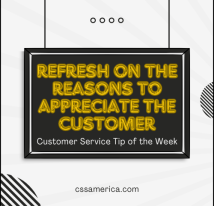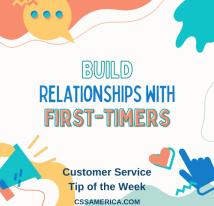
How can someone have so much anger about something that is so insignificant? Why is the customer getting all out of sorts for something that is not a big deal? Why are they getting upset with me when I had absolutely nothing to do with their problem?
Although we want to help these customers and we try to navigate through their specific issues and focus on them and their needs, sometimes we can’t help but ask ourselves these questions. And when we ask ourselves these questions, it could be because we don’t understand, we’re starting to get wound up and feed into their negative emotion, or there’s something going on with us that’s keeping us from helping them.
Maybe they’re a good person having a bad day.
This statement may be true or very untrue, but handling these situations well requires we handle our own emotions well. It helps us to have a bit of empathy with them so we can remain a little detached from the emotional nature of the conversation. Sometimes a key to handling these situations effectively is handling ourselves effectively.
Maybe they’re a good person having a bad day.
If we pose these questions of “Why is the customer overreacting?”, sometimes those “Why’s” just feed on each other in an unproductive way. We need to find a way to answer the Why for ourselves, even if it may not be the ultimate correct answer. We need to find a way to answer it such that it helps us maintain our composure. It helps us to stay calm. It helps us to focus on the facts instead of getting burned by the friction.
Maybe they’re a good person having a bad day.
Try telling yourself this, as it helps me to avoid taking things so personally, to be a bit more understanding, and to maintain my composure.
It helps to assume that the angry customer is a good person having a bad day.
Signup for FREE Tips! Contact Us More Resources for You Visit Our Home Page























